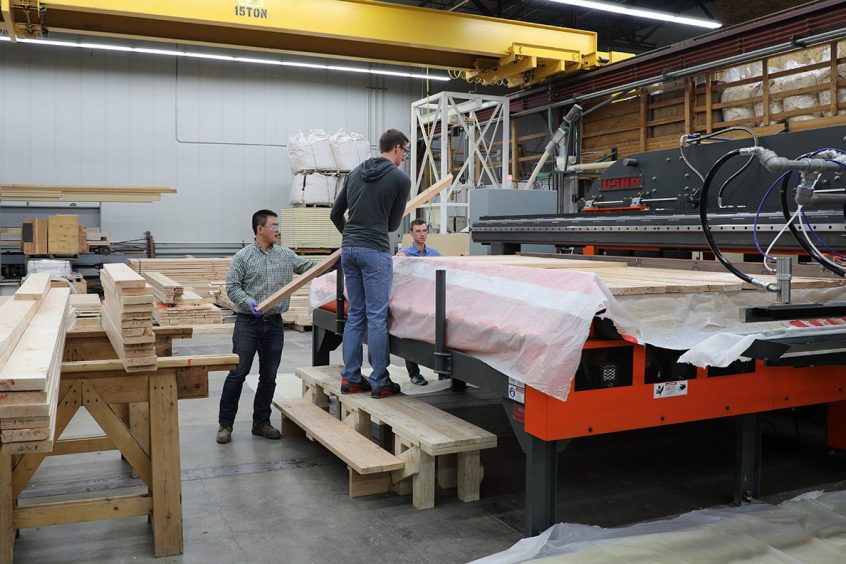The next generation of cross-laminated timber could further establish Washington state as a leader in mass timber.
Washington State University recently announced that its researchers at the Composite Materials and Engineering Center(CMEC) are partnering with the Composite Recycling Technology Center(CRTC), a Port Angeles-based nonprofit organization, to develop a longer lasting and more moisture-resistant cross-laminated timber. The group will share its joint efforts at the Mass Timber Conference later this month.
The WSU researchers are working with CRTC on a process that combines thermal modification with the addition of carbon fiber that aims to make the timber more resistant to rot and warping from moisture. They anticipate that the enhanced CLT could be applied to simpler designed buildings that require faster construction, such as schools, disaster shelters and military barracks.
According to the announcement:
To convert the timber to a more durable, stable construction material, the researchers are investigating thermally modified lumber. Thermal modification makes the wood more resistant to decay, and less prone to shrinking and swelling as the moisture conditions change. Its compact layering also creates an airtight building material, which can reduce a building’s energy usage and costs. Furthermore, CLT panels are prefabricated with little waste on site…Thermal modification of wood slightly reduces its strength, so the researchers will be adding recycled carbon fiber to CLT to restore the strength. Recycled carbon fiber costs about one‑tenth as much as virgin fiber.
Coupling a renewable resource with a recycled material is a sustainable process that can save time and money, promote environmental stewardship while creating new jobs that bolster rural communities. CLT has grown in popularity due to its environmental benefits, ease of installation, growing acceptance for use in tall buildings and attractiveness. Last year, the state updated its building code standards to allow for engineered woods like CLT to be used on buildings up to 18-stories-tall.
Manufacturing CLT is less carbon-intensive than other building materials like concrete or steel due in large part that wood is a renewable resource that removes CO2 gas from the atmosphere and continues to hold carbon even after harvesting. CLT can be made from small-diameter timber that is often thinned from managed forests to reduce wildfire. Using the thinned wood, instead of burning it in a prescribed burn, also keeps the carbon sequestered in the timber, and not released in the air.
